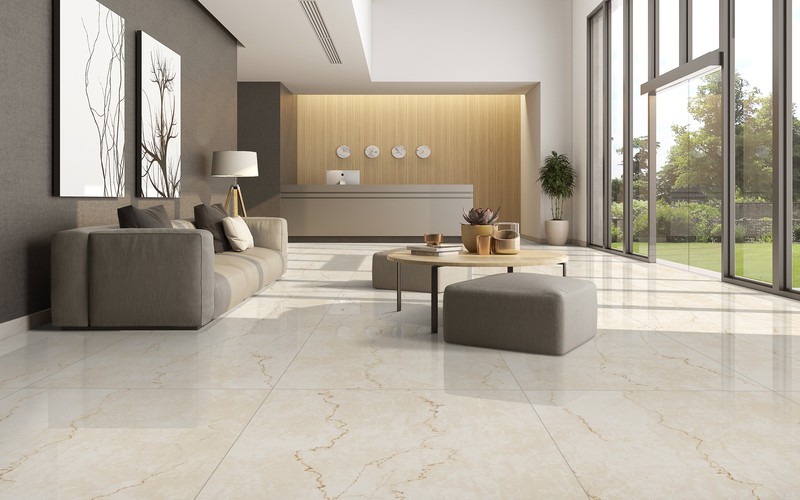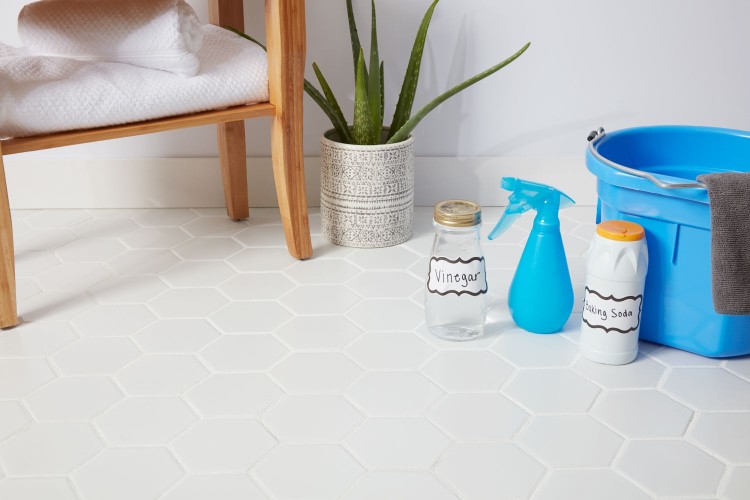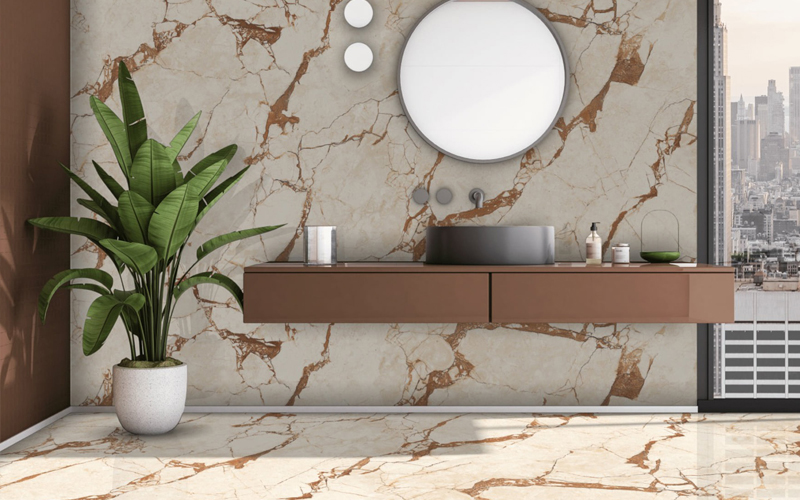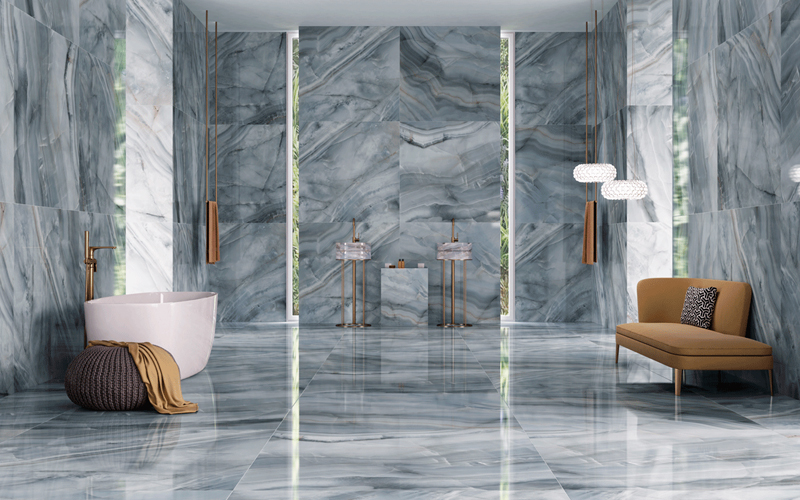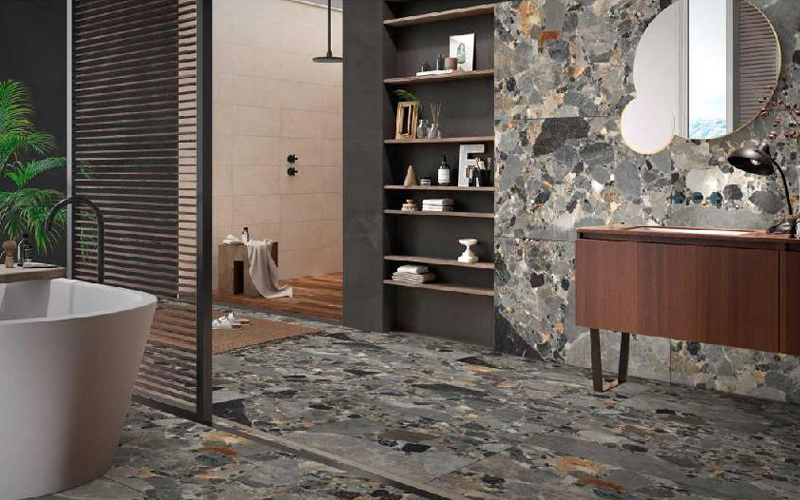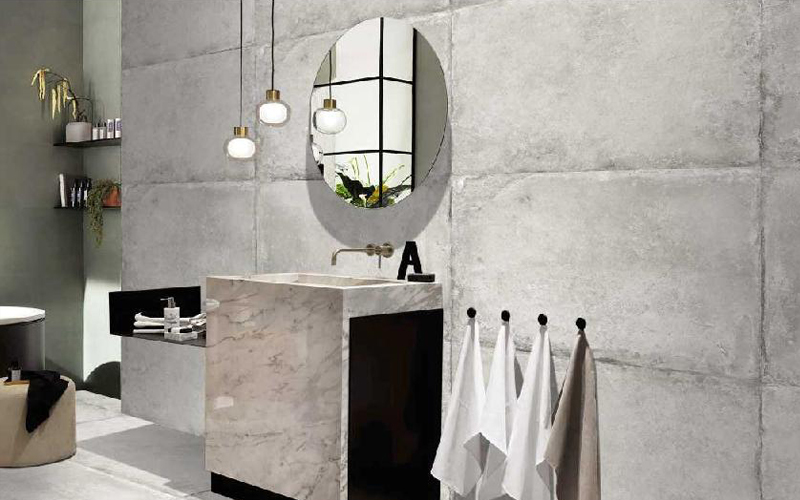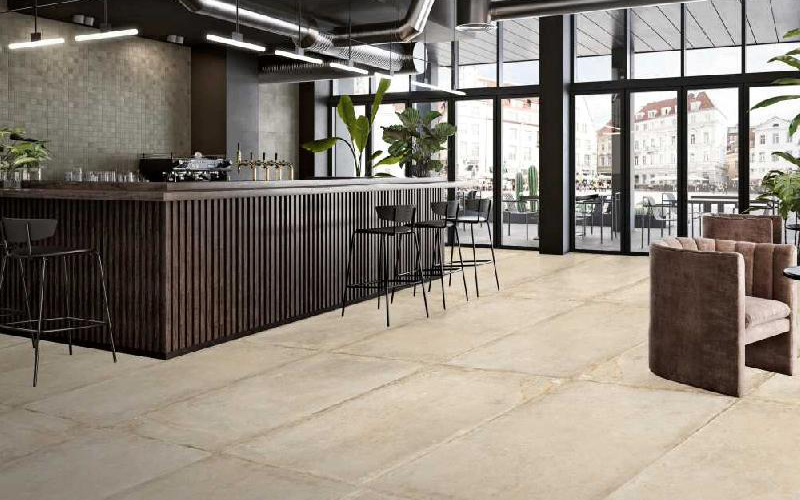What are ceramic floor and wall tiles made off?
- News
- 20 Apr 2023
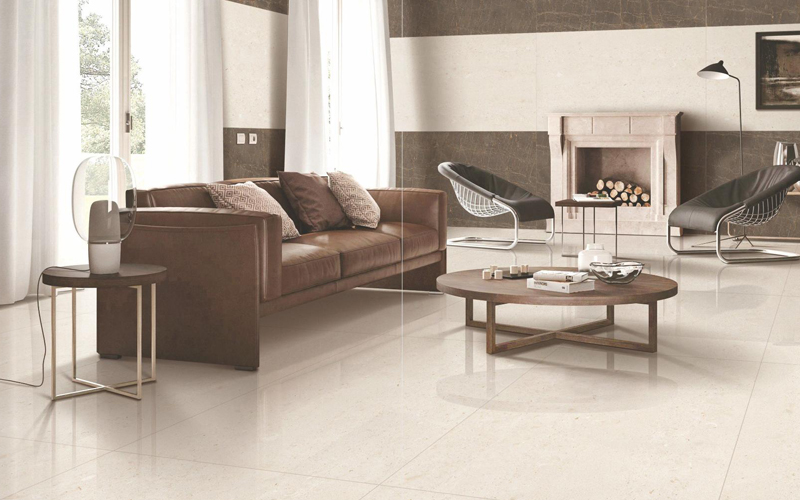
Ceramic floor and wall tiles are made of a mixture of clay, minerals, and water. The mixture is shaped into the desired size and shape, and then fired at a high temperature in a kiln to harden and strengthen the tile.
The primary component of ceramic tiles is clay, which is a naturally occurring material that is abundant and easy to work with. Other materials that are commonly used in the production of ceramic tiles include feldspar, kaolin, quartz, and talc. These minerals are added to the clay mixture to provide additional strength, durability, and color.
Once the tile has been fired, it is often coated with a glaze, which is a liquid glass-like material that is applied to the surface of the tile. The glaze provides a protective layer that makes the tile resistant to water, stains, and scratches. Glazes can be clear or colored, and they are available in a variety of finishes, such as glossy, matte, or textured.
In summary, ceramic floor and wall tiles are made of a mixture of clay and other minerals, shaped into tiles, fired in a kiln, and then coated with a glaze to provide a protective layer and decorative finish.
Ceramic tiles are a popular choice for flooring and wall coverings because of their durability, versatility, and aesthetic appeal. They are available in a wide range of colors, patterns, and textures, making them suitable for various design styles and applications.
The manufacturing process for ceramic tiles involves several stages. The first stage is the preparation of the raw materials. The clay and other minerals are mixed in precise proportions to create a homogeneous mixture. The mixture is then shaped into tiles using various methods such as pressing, extrusion, or casting.
The shaped tiles are then dried to remove any excess moisture before being fired in a kiln. The firing process is critical to the strength and durability of the tiles. The temperature and duration of the firing process depend on the type of clay and other materials used and the desired final properties of the tiles.
After firing, the tiles may be coated with a glaze to provide a smooth and waterproof surface. Glazes are often applied using a spray gun or dipped into the glaze solution. The glazed tiles are then fired a second time at a lower temperature to fuse the glaze to the tile surface.
In addition to glazes, ceramic tiles may also be decorated using various techniques such as screen printing, hand-painting, or digital printing. These decorative elements can add visual interest and enhance the aesthetic appeal of the tiles.
Ceramic tiles are a sustainable and eco-friendly choice for flooring and wall coverings. They are made from natural materials and can be recycled or reused at the end of their useful life. They are also easy to maintain, requiring only regular cleaning and occasional sealing to protect against stains and damage.
In summary, ceramic tiles are a durable and versatile flooring and wall covering option that is made from natural materials and can be customized to suit a wide range of design styles and applications. The manufacturing process involves several stages, including mixing, shaping, firing, and glazing or decorating the tiles.
There are different types of ceramic tiles available in the market, including glazed and unglazed tiles, porcelain tiles, and terracotta tiles.
Glazed ceramic tiles are coated with a layer of liquid glass that is fused to the surface of the tile during firing. The glaze provides a decorative finish and makes the tile resistant to water, stains, and scratches. Glazed tiles are suitable for indoor use and are available in a variety of colors, patterns, and textures.
Unglazed ceramic tiles, on the other hand, do not have a glaze layer and have a natural, rustic appearance. They are more porous than glazed tiles and require sealing to protect against stains and damage. Unglazed tiles are commonly used in outdoor areas and in high-traffic commercial spaces.
Porcelain tiles are a type of ceramic tile that is made from a finer clay mixture and fired at a higher temperature than other ceramic tiles. This results in a dense, hard, and durable tile that is suitable for both indoor and outdoor use. Porcelain tiles are available in a variety of colors and patterns and can mimic the look of natural stone or wood.
Terracotta tiles are made from natural clay and are known for their warm, rustic appearance. They are commonly used in Mediterranean and Spanish-style homes and are suitable for indoor and outdoor use. Terracotta tiles require sealing to protect against stains and damage and are available in various sizes and shapes.
In addition to the different types of ceramic tiles, there are also different sizes and shapes available, including square, rectangular, hexagonal, and octagonal tiles. These tiles can be arranged in various patterns, such as straight, diagonal, herringbone, or basketweave, to create unique and interesting designs.
In summary, ceramic tiles are available in different types, sizes, and shapes, and are suitable for various design styles and applications. Glazed and unglazed tiles, porcelain tiles, and terracotta tiles each have their unique characteristics and benefits. With their durability, versatility, and aesthetic appeal, ceramic tiles remain a popular choice for flooring and wall coverings.
- ceramic floor tiles composition
- wall tile materials
- ceramic tile manufacturing
- tile components
- tile composition insights

